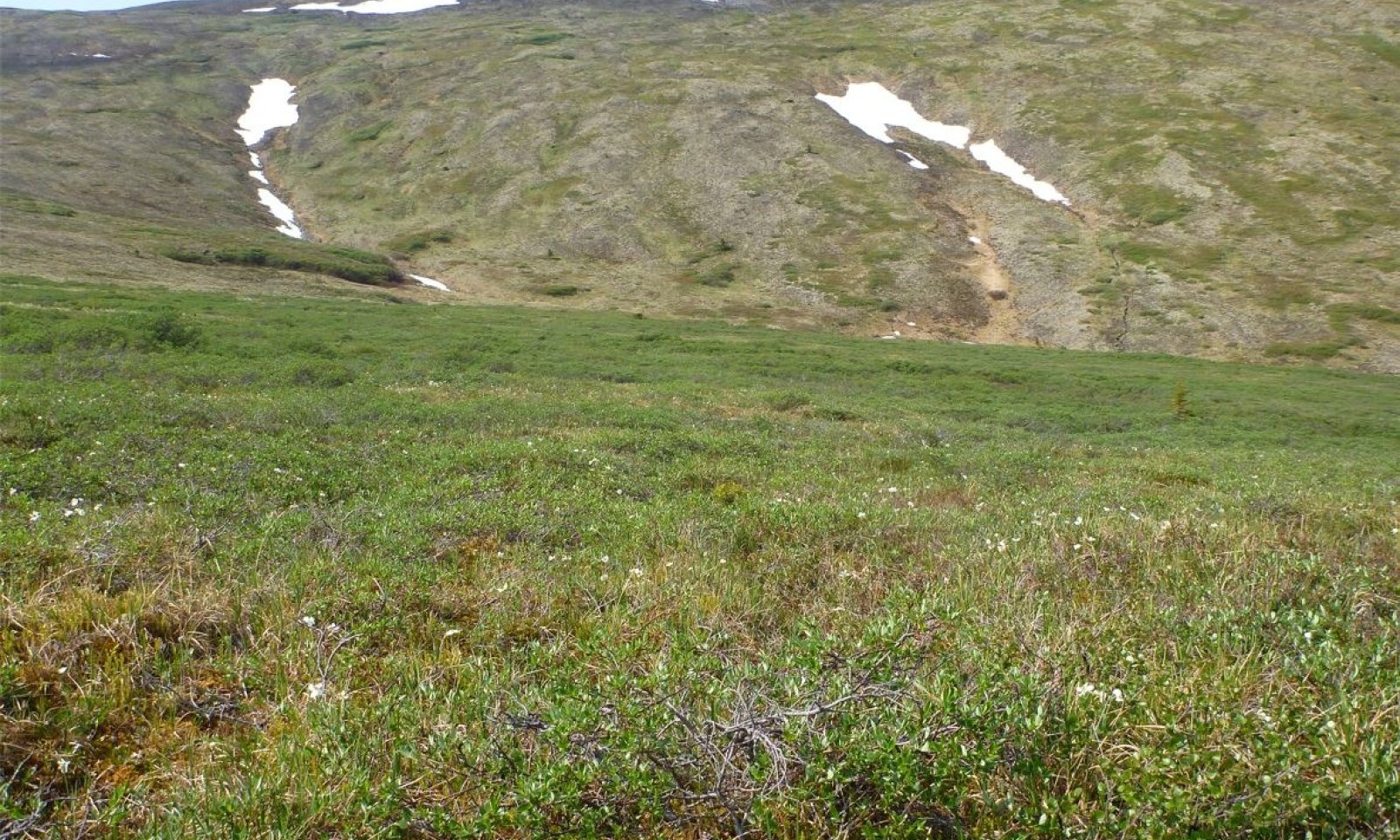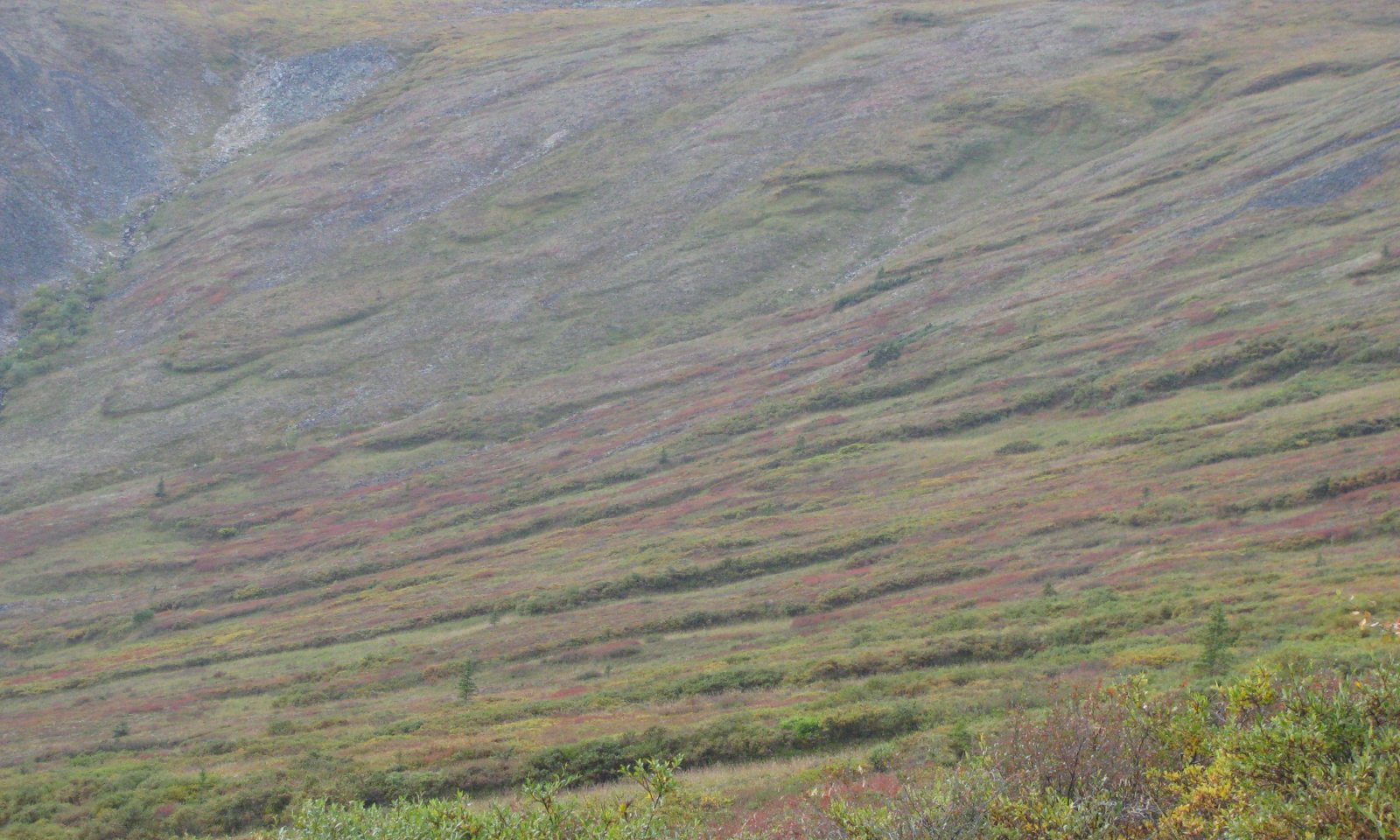
Alpine Dwarf Scrub Gravelly Moist Slopes
Scenario model
Current ecosystem state
Select a state
Management practices/drivers
Select a transition or restoration pathway
-
Transition T1A
Solifluction formation
More details -
No transition or restoration pathway between the selected states has been described
Target ecosystem state
Select a state
Description
The reference plant community is willow dwarf scrub (Viereck et al. 1992). There is one documented plant community in the reference state.
Submodel
State 2
Solifluction Lobe State



Description
Solifluction is the slow, viscous downslope flow of water-saturated soil (Shoeneberger and Wysocki 2017). This process is most active for this site during spring thaw where the upper band of soil material slips on a seasonally frozen layer. Solifluction is a common process associated with many ecological sites in this area. However, this site can experience solifluction to a degree that results in the formation of solifluction lobes.
A solifluction lobe is an isolated tongue-shaped feature up to 25 meters wide and 150 meters or more long, formed by the rapid solifluction of certain sections of a slope showing variations in gradient. This feature commonly has a steep front and a relatively smooth upper surface (Shoeneberger and Wysocki 2017). Larger solifluction lobes tend to have a distinct mosaic of vegetation, while smaller solifluction lobes do not. The presence of this vegetation mosaic led to the development of an alternate state.
This vegetation mosaic has three distinct communities all associated with different positions on or adjacent to the solifluction lobe. The first plant community occurs upslope from the solifluction lobe (community 2.1) and generally resembles the reference state vegetation. The second plant community occurs on the solifluction lobe (community 2.2) , which has a productive stand of shrubs that grow substantially taller compared to the surrounding alpine vegetation. The steep front associated with large solifluction lobes results in comparatively warmer and drier soils. The third community occurs downslope from the solifluction lobe (community 2.3.) and is a protected position that collects wind drifted snow. Community 2.3 has deep snowpack that persists for longer durations of time compared to surrounding vegetation, which results in comparatively moister soils.
Submodel
Model keys
Briefcase
Add ecological sites and Major Land Resource Areas to your briefcase by clicking on the briefcase (![]() ) icon wherever it occurs. Drag and drop items to reorder. Cookies are used to store briefcase items between browsing sessions. Because of this, the number of items that can be added to your briefcase is limited, and briefcase items added on one device and browser cannot be accessed from another device or browser. Users who do not wish to place cookies on their devices should not use the briefcase tool. Briefcase cookies serve no other purpose than described here and are deleted whenever browsing history is cleared.
) icon wherever it occurs. Drag and drop items to reorder. Cookies are used to store briefcase items between browsing sessions. Because of this, the number of items that can be added to your briefcase is limited, and briefcase items added on one device and browser cannot be accessed from another device or browser. Users who do not wish to place cookies on their devices should not use the briefcase tool. Briefcase cookies serve no other purpose than described here and are deleted whenever browsing history is cleared.
Ecological sites
Major Land Resource Areas
The Ecosystem Dynamics Interpretive Tool is an information system framework developed by the USDA-ARS Jornada Experimental Range, USDA Natural Resources Conservation Service, and New Mexico State University.

